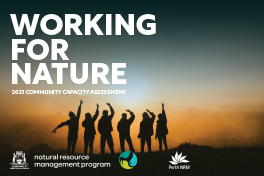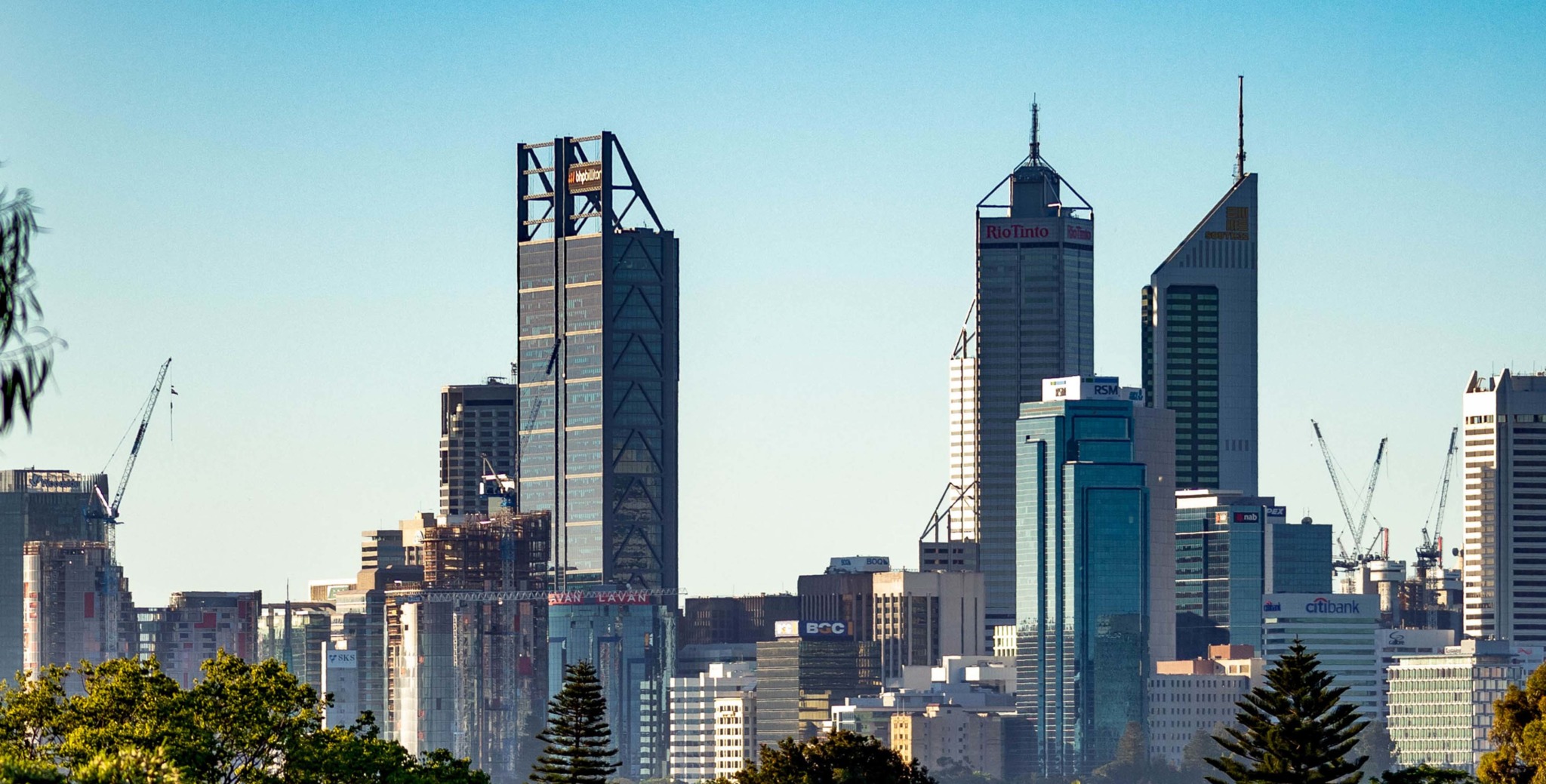Past Projects
Completed or Ended Projects
About the 2021 CCA Project
Perth NRM regularly conducts a community capacity assessment so that we can monitor changes in capacity over time, providing the info to:
The 2021 Community Capacity Assessment was funded through the State NRM Program.
Click on this link or the image below to view the report.

The 2021 Community Capacity Assessment (CCA) helped identify gaps and areas of support as well as strengths and ideas for improvement, through direct engagement with stakeholders in a participative process.
The co-design approach of this CCA allowed volunteers and stakeholders to become an active part of the project from the beginning.
It was based on the belief that all peoples’ contribution can be creative and of high value as everyone is providing their point of view and deliver insights and expertise that are based on individual experiences.
The goal was to establish an understanding of the current situation of NRM volunteers, groups, and stakeholders, to tell their story, make their work visible, to gather trends and identify common issues to create a vision of how NRM work could look in the future.
The information gathered in this project was crucial to assist community volunteers to improve NRM outcomes, to aid local governments in helping, directing, and guiding volunteer contributions in NRM and to facilitate overall better NRM outcomes in the Perth Region.
Perth NRM Enviro Network
One of the key issues identified in the early workshops of the 2021 Community Capacity Assessment was the need for greater communication and collaboration between the incredible community of practice that voluntarily manages so many of our favourite public spaces.
To get the ball rolling, Perth NRM’s Stakeholder Engagement team started the PNRM Enviro Network Facebook Group, allowing people to discuss specific issues such as weed management, through to broader issues such as recruitment and branding.
People who participated in the CCA Survey were invited to join, and in just a week, there were more than 30 members from a variety of groups joining the discussion already.
You can join as an individual, or a group page, and we’d love to see you sharing with your community and working toward shared outcomes and new opportunities!
Perth NRM Enviro Network Introduction Interviews
This project was supported by funding from the Western Australian Government’s State NRM Program.
Our Back from the Brink Project, Stage 1 was 12 months of intensive work to lay the foundation for our Stage 2 project. The project established baseline indicator data on population genetics, fauna population and distribution to establish population trajectories. Perth NRM worked with conservation groups to improve the habitat of Black-flanked Rock-wallaby (Petrogale lateralis), Woylie (Bettongia penicillata), Chuditch (Dasyurus geoffroii), Western Ringtail Possum (Pseudocheirus occidentalis), Carnaby’s Black Cockatoo (Calyptorhynchus latirostris).
Referencing National Recovery Plans, this project implemented actions to conserve priority species at two wildlife sanctuaries, one national park, and across 2ha of strategic remnants of Carnaby’s Black Cockatoo nesting and foraging habitat. From 2018 – 2019 the project achieved:
Perth NRM delivered this project in partnership with:
Perth NRM received support for this project through funding from the Australian Government’s National Landcare Program.
Food Future was an initiative of Perth NRM, designed to promote the Sustainable Agriculture programs and extend that work throughout the supply chain through to consumer education and engagement.
This led to projects such as the WA Food Security Plan
“With Perth expected to undergo major population growth, there is a need to create a more resilient food bowl. The focus is on increasing food security for the city, creating a more resilient environment against climate impacts, whilst at the same time strengthening the regional economy.”
Our region supports one of the largest remnant populations of the Glossy Leaf Hammer Orchid (Drakea elastica). With few scattered populations, the species is listed as endangered on the Environment Protection and Biodiversity Conservation Act 1999 (EPBC Act). Perth NRM delivered the project in partnership with Department of Biodiversity, Conservation and Attractions and installed a 1.3km long limestone ‘green bridge’ near the population. The bridge acts as a protective barrier for the Banksia woodlands and the orchid itself.
Green bridges are a thick limestone layer installed over the top of a track where it crosses a Phytopthora cinnamomi (dieback) infestation. The limestone deters the spread of dieback due to its alkalinity, and the free draining and stable surface reduces the risk of soil and water contact and potential dieback transfer across the reserve.
Perth NRM received support for this project through funding from the Australian Government’s National Landcare Program.
This program was a joint initiative between Perth NRM, Wheatbelt NRM and the Rivers and Estuaries Division at the Department of Parks and Wildlife.
The three-year Healthy Soils Healthy Rivers program was a joint initiative between Perth NRM, Wheatbelt NRM, Swan River Trust (now Dept of Biodiversity Conservation & Attractions) and the Australian Government’s National Landcare Program.
The program was officially launched on Wednesday 26 August 2015 by The Hon Christian Porter MP, Member for Pearce and Parliamentary Secretary to the Prime Minister at the Fairbrossen vineyard in Carmel, Western Australia.
The project assisted landholders from the Ellen Brook, Brockman, Gingin, Wooroloo, Helena and Swan River sub-catchments to improve soil health, and contribute to improved water quality in the Swan-Avon river system. Positive feedback from farming participants provided the momentum to attract additional funding via the Grape Wine Research Development Corporation (now Wine Australia) to expand the project to wine grape producers from other catchments.
The program encouraged the 130 participants to take an integrated approach to nutrient management by improving their understanding of their soils through soil, irrigation water and leaf testing and analysis. This was backed up with one-on-one support from a recognised industry appropriate agronomist who also provided each participant with a comprehensive nutrient management report
Perth NRM collaborated with the Hills Orchard Improvement Group, WA Citrus Improvement Group, Perennial pasture group (horses), Swan Valley & Regional Wine Makers Association, Swan Valley Table Grape Growers Association, Small Landholders of Gidgegannup and Wines of WA to deliver this project.
This project focused on partnerships and volunteering, through regional funding under the National Landcare Programme.
An on-ground coordination and community support project, the project targeted aquatic and coastal systems (NLP Strategic Outcome 1) from Two Rocks to Rockingham, supporting more than 25 community groups to maintain and restore coastal habitat in partnership with businesses and local governments.
Delivered by Perth NRM in partnership with the Town of Cottesloe and City of Kwinana (with support from all other coastal local governments), over 25 community groups and more than 7 businesses.
Outcomes:
This project was supported by Perth NRM, through funding from the Australian Government’s National Landcare Program.
The Planning for Climate Change Project ensured the development of the Swan Region Strategy for Natural Resource Management incorporated latest climate change knowledge. The project was implemented from 2013 – 2016 and brought together technical experts and stakeholders to develop information and maps to help people plan for climate change in the region. The Australian Government provided funding for the project as part of the Regional Natural Resource Management Planning for Climate Change Fund.
Stakeholders, technical knowledge holders, and experts from across the region identified and prioritised risks posed by climate change through a series of several workshops. During the process, stakeholders identified the most severe risks and developed adaption responses to them. Multi Criteria Analysis Shell for Spatial Decision Support (MCAS-S) produced findings during the workshops and aided in answering critical climate change questions. MCAS-S produced a series of maps to inform adaptation responses.
Perth NRM was supported by the Australian Government and funded by the Regional Natural Resource Management Planning for Climate Change Fund.
In June 2018, Perth NRM started a pilot project funded by the Regional Land Partnership to develop and trial a single-audit multi-certification tool with leading viticulturists, orchardists & vegetable producers, and key industry stakeholders.
The goal was to develop a cloud-based dataset for local producers that would measure grower performance against more than 200 sustainability criteria for environmental, social and economic performance.
The results would act as a sustainability indicator, along with resources that would allow growers to improve their performance.
This system would then connect the sustainability ‘score’ with conscientious consumers, through a smartphone app able to scan/read rcodes, QR codes or smartbars.
This pilot was supported by Perth NRM through funding from the Australian Government’s National Landcare Program.
Perth NRM received funding from the National Landcare Program between 2015-2016 to deliver the first stage of our Swan-Canning River Recovery program. We worked with the community to focus on the eradication of hydrocotyle weed with the Middle Swan-Canning Rivers. We also provided support for practical community environmental action and helped people understand how their actions affect the river.
A local steering group was established to oversee the practical actions to help people identify ways they can contribute towards the rivers’ long-term health. The Swan Canning River Recovery, Stage 1 achieved the following:
Perth NRM delivered this project in partnership with:
Perth NRM was supported by the Australian Government and funded by the National Landcare Program.
The Swan Canning River Recovery Stage Two aimed to eradicate the hydrocotyle weed within the river system. Stage 2 provided support for practical community environmental action and helped people understand how their actions affect the river. The project has achieved:
Perth NRM delivered the project in partnerships with:
Perth NRM received support for this project through funding from the Australian Government’s Improving Your Local Parks and Environment program.
Threatened Ecological Communities (TEC) in the Swan NRM region, Stage 1 was 12 months of intensive work to lay the foundation for our Stage 2 project. The project was focussed on better understanding and managing threats to restore habitat at a local scale and support regional and landscape scale benefits of improved condition, ecological resilience, connectivity and climate change adaptability.
The project established baseline vegetation condition, fauna presence and weed distribution data to target future work in Stage 2. We collaborated with the community to plan training and workshops to improve community awareness, understanding, and capacity for best practice in TEC management.
Perth NRM worked with community groups worked to protect and improve 1644.91 hectares of TEC. We worked to improve the condition of listed TEC’s including ‘Banksia Woodlands’, ‘Clay Pans’, ‘Shrub lands and Woodlands of the Eastern Swan Coastal Plain (SCP Community 20c)’, ‘Corymbia calophylla – Kingia australis woodlands on heavy soils of the Swan Coastal Plain (SCP Community 3a)’, ‘Gingin Ironstone’, ‘Coastal Saltmarsh’, ‘Assemblages of plants and invertebrate animals of tumulus springs’ and ‘Shrublands and woodlands on Muchea limestone’.
Together we worked across a variety of bushland reserves in Perth including Lake Wannamal/ Mogumber Nature Reserve, Paganoni Swamp Reserve, Forrestdale Lake Nature Reserve, Bullsbrook Nature Reserve and Greater Brixton Street Wetlands. From 2018-2019 the project achieved:
Perth NRM delivered the project in partnership with:
Perth NRM received support for this project through funding from the Australian Government’s National Landcare Program.
We acknowledge and appreciate the support of all our partners, supporters, funding bodies and sponsors.


